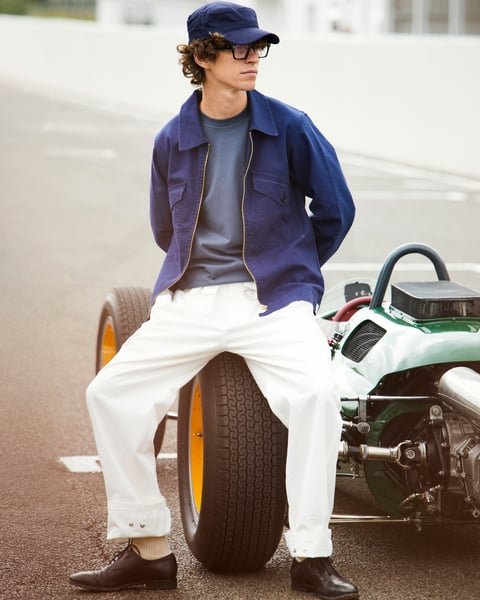Are these the five coolest Group 5 sportscars?
Narrowing down the five coolest cars from one of the coolest sportscar classifications in racing history is no easy task. Gary Watkins is our kid in a candy store totting up five from Group 5.

Porsche 935K3
Long-established Porsche preparation specialists Erwin and Manfred Kremer opted to develop their own 935s from the outset of Group 5. The Cologne brothers honed their concept with the K3 of 1978, introducing revised aerodynamics and an air-to-air intercooler. The result was the most successful 935 ever. A works-run Kremer 935K3 claimed victory at the 1979 Le Mans 24 Hours with Klaus Ludwig and the Whittington brothers, Bill and Don. Ludwig would also win 10 of the 11 rounds of the DRM German racing championship with Kremer the same year. And just for good measure, the K3 completed the triple crown of big enduros with victories at Sebring and Daytona in 1980 and '81 respectively.

Porsche 935/78
The famous Moby Dick Porsche – the ultimate 935 to emerge from behind the gates of the German manufacturer's Weissach factory – competed just a handful of times in 1978 before the German manufacturer left Group 5 to the privateers. Moby Dick won its debut in the Silverstone 6 Hours with Jacky Ickx and Jochen Mass. But it was Le Mans for which the low-line car was designed, Rolf Stommelen flying down the Mulsanne Straight at more than 200mph to put the car third on the grid in among the Group 6 prototypes. The car co-driven by Manfred Schurti could only finish eighth after suffering an oil leak. Two more Moby Dicks were built from factory drawings by Joest Racing, John Fitzpatrick taking fourth at Le Mans behind the trio of new Porsche 956 Group C cars.

Photography by Jochen Van Cauwenberge
Triumph TR8 Turbo
It looked like a good idea on paper, but this rare British Group 5 project achieved little. Tuning company Janspeed conceived the idea of going racing with twin-turbo Triumph TR8, but it ended up pooling its resources with the ADA Engineering squad to get the project off the ground. The car made belated debut at the 1980 Silverstone 6 Hours before heading for the Le Mans 24 Hours. It wouldn't start either time, nor did it race on its next appearance at Silverstone in 1981. Only at that year's Brands Hatch 1000Km did TR8 finally grace a WCM starting grid. It was a case of what might have been.

Lancia Beta Montecarlo
Endurance racing was always a side programme for a manufacturer so heavily involved in rallying. But Lancia's Group 5 Beta Montecarlo was the most successful of its line of sportscars developed in conjunction with Dallara in the late 1970s and the early 1980s. Introduced in 1979, the under two-litre class contender powered by a 1.4-litre in-line turbo four notched up a succession of class titles, including the overall World Championship for Makes in 1981 and one in the DRM German racing championship. There were a string of overall victories, too, with the likes of Riccardo Patrese, Michele Alboreto, Eddie Cheever and Walter Rohrl driving.

Zakspeed Ford Capri III Turbo
Ford helped conceived Group 5 for the WCM, but its successes came in the DRM. Series stalwart Zakspeed brought out the car with which it remains synonymous today at the back end of 1978. The original 1.4-litre turbo won eight of the 11 races in the Division 2 class the following year but missed out on the overall title. The man who did win take the crown, Klaus Ludwig, jumped ship from the Kremer Porsche team to drive Ford's new 1.7-litre Division 1 Capri in 1980 and would have retained his crown by for an early-season eligibility row. He put that right in 1981, though this time he was racing the 1.4 in Division 2.
Photography courtesy of LAT Images
group 5
76MM
2018







